India
Atal Bihari Vajpayee’s 100th Birth Anniversary: Iconic Images That Capture His Journey
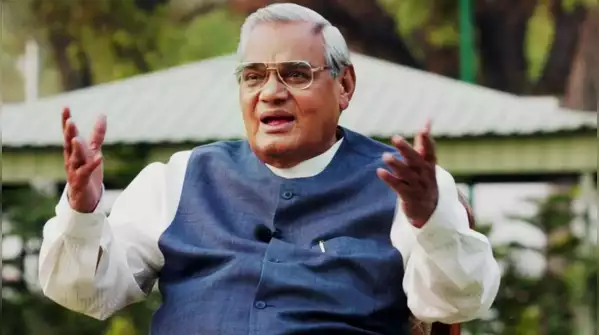
Contents
Introduction to Atal Bihari Vajpayee
Atal Bihari Vajpayee was an influential figure in Indian politics, renowned for his multifaceted identity as a politician, poet, and orator. Born on December 25, 1924, in Gwalior, Madhya Pradesh, Vajpayee’s early life was steeped in a nurturing environment that encouraged education and civic engagement. He pursued a degree in political science from the University of Delhi, honing his skills in oratory and writing that would later become hallmarks of his political career.
Vajpayee’s political journey commenced in the 1950s when he joined the Bharatiya Jana Sangh, the precursor to the Bharatiya Janata Party (BJP). His commitment to the ideals of nationalism and social welfare quickly propelled him into leadership roles. Vajpayee’s prominence grew within Indian politics, culminating in his election to the Lok Sabha, the lower house of India’s Parliament, several times. His articulate speeches and knack for connecting with the populace distinguished him as a leading political figure.
Throughout his career, Atal Bihari Vajpayee navigated the complex landscape of Indian politics, marked by ideological challenges and shifting alliances. He served as Prime Minister of India three times, first briefly in 1996, then in 1998–1999, and finally from 1999 to 2004. During his tenure, he emphasized economic reforms, infrastructure development, and India’s nuclear policy, which had a lasting impact on the nation’s trajectory. Furthermore, Vajpayee’s oratory skills earned him respect beyond political boundaries, as he often used poetry to express his thoughts, endearing him to the public and adding depth to his speeches.
This introduction serves as a precursor to exploring the iconic images that depict Vajpayee’s remarkable journey, each encapsulating moments of his illustrious life and significant contributions to the nation.
Political Milestones in Vajpayee’s Career
Atal Bihari Vajpayee’s political career is a remarkable journey that spans several decades, characterized by pivotal milestones and influential leadership roles. His foray into politics began in 1942, as he joined the Rashtriya Swayamsevak Sangh (RSS), where he honed his skills in organization and public speaking. In 1951, he became a founding member of the Bharatiya Jana Sangh, which later evolved into the Bharatiya Janata Party (BJP) in 1980. Vajpayee’s vision and commitment significantly shaped the party’s identity and strategy, helping to establish it as a major political force in India.

Vajpayee’s ascent in politics is marked by his appointment as the Minister of External Affairs in Prime Minister Morarji Desai’s cabinet, a role where he showcased his diplomatic prowess. His tenure is particularly noted for the efforts towards strengthening India’s global standing. However, it was during the 1990s that Vajpayee truly emerged as a prominent national leader. His leadership of the BJP saw the party securing a majority in the 1998 general elections, leading to his first term as Prime Minister.
His first term lasted only for 13 days, but his indelible impact was felt, leading to a successful return in 1999. During this stint, he implemented significant economic reforms aimed at liberalizing the Indian economy, enhancing its competitiveness in the global market. Vajpayee’s government is celebrated for its emphasis on infrastructure development, notably the Golden Quadrilateral project, which revolutionized transportation in India.
Furthermore, his foreign policy initiatives, including the historic Lahore Declaration with Pakistan, underscored his commitment to peace and dialogue in the region. Vajpayee’s ability to foster consensus among diverse political factions reaffirmed his reputation as a seasoned statesman. Thus, his political milestones not only reflect personal achievements but also signify landmark changes that have shaped modern India.
Legacy of Leadership: Policies and Reforms
Atal Bihari Vajpayee, the pivotal figure in Indian politics, left an indelible mark on the nation’s landscape through his visionary policies and reforms. His tenure as Prime Minister from 1998 to 2004 was distinguished by a fervent push for economic liberalization, which played a critical role in transforming the Indian economy into one of the fastest-growing in the world. Vajpayee advocated for policies that encouraged privatization, deregulation, and foreign direct investment, creating a conducive environment for business and spurring job creation across sectors.

Infrastructure development was another hallmark of Vajpayee’s administration. His ambitious initiative, the National Highways Development Project, aimed to modernize India’s infrastructure, significantly improving connectivity and fostering regional economic development. This initiative not only enhanced transportation efficiency but also contributed to the creation of employment opportunities and the growth of ancillary industries. His government’s focus on building roads, bridges, and rail networks acted as a catalyst for economic activities, especially in rural areas.
Technological advancement was a vital agenda during Vajpayee’s rule as well. He recognized the importance of information technology in shaping India’s future and introduced policies that nurtured the IT industry. His support for initiatives such as the Digital India campaign laid the groundwork for widespread digital transformation in the country. Under his leadership, India emerged as a global player in the IT sector, drawing investments from multinational corporations and generating significant economic returns.
Vajpayee’s leadership style was characterized by astute diplomacy, integrity, and a penchant for consensus-building, which enabled him to navigate complex socio-political dynamics. His vision for India encompassed not only economic growth but also inclusive development, ensuring that the benefits of progress reached every segment of society. Through his comprehensive policies and reforms, Atal Bihari Vajpayee’s legacy endures, influencing contemporary governance and serving as a guiding principle for future leaders.
Also read : Jaishankar’s 6-Day Visit to the US: What to Expect
Vajpayee’s Poetry and Literary Contributions
Atal Bihari Vajpayee, known primarily for his political acumen and leadership, also possessed a profound passion for poetry and literature that significantly shaped his persona and political journey. His literary contributions, unearthing the depth of his thoughts and feelings, have been an integral part of his identity. With a distinctive style, Vajpayee’s poetic works often encompassed themes of love for the nation, human emotions, and a longing for peace, reflecting his innate idealism and philosophical thoughts.
Among his notable literary accomplishments, the collection of poems titled “Kahin Door Jab Din Dhal Jaye” showcases his ability to blend personal emotions with broader nationalistic sentiments. The poet effectively captures the myriad hues of life, illustrating his belief in the importance of cultural and historical heritage, which resonates throughout Indian society. His poetry often invokes a sense of nostalgia, drawing inspiration from India’s rich traditions while simultaneously addressing contemporary issues of governance and unity.
Throughout his literary journey, Vajpayee’s works revealed his underlying political ideologies. He firmly believed that poetry could serve as a catalyst for social change and collective consciousness. His writings touched upon critical themes such as secularism, national integration, and the significance of dialogue in democratic processes. This synergy between his poetry and politics not only enriched the literary landscape of India but also elevated his stature as a cultural figure.
In the realm of literary contributions, Vajpayee’s voice was a beacon during turbulent times, offering hope and solace to many. His ability to resonate with the public through both written and spoken word demonstrated the transformative power of poetry. Ultimately, his literary legacy continues to uphold the ideals of compassion, wisdom, and progress, securing Vajpayee’s place in the annals of India’s cultural history.
Iconic Images That Define His Journey
Atal Bihari Vajpayee, a prominent figure in Indian politics, led a life marked by numerous striking moments that have been captured in iconic images over the years. These images serve not only as visual representations of his journey but also as historical artifacts that encapsulate the essence of his leadership and vision for the nation. From his early years in public life to his tenure as Prime Minister, each photograph tells a story that resonates with the spirit of India.
One such image that stands out is from the early 1960s, where a young Vajpayee passionately addresses a gathering, a testament to his longstanding commitment to public service. This moment reflects his oratory skills and ability to connect with the masses, traits that would later define his political career. Such images evoke a sense of nostalgia and pride among supporters, encapsulating the idealism of a young leader poised to make a difference.
An equally significant photograph is from the Kargil conflict in 1999, depicting Vajpayee addressing the nation with a somber yet determined expression. The visual not only captures his resolve during a critical juncture in India’s history but also highlights his leadership qualities amidst adversity. The photograph symbolizes resilience and strategic thinking, characteristics that were crucial in maintaining national morale during the conflict.
Moreover, images of his diplomatic engagements reflect his dedication to fostering international relations. One notable image features Vajpayee with prominent global leaders, illustrating his efforts in making India a key player on the world stage. These moments are vital in understanding how his diplomatic approach helped shape India’s position in global politics.
Through these iconic images, one can comprehend the significance of Atal Bihari Vajpayee’s journey as a leader who left an indelible mark on the political landscape of India. Each photograph serves as a reminder of his enduring legacy and the values he stood for throughout his remarkable life.
Diplomatic Achievements and Global Relations
Atal Bihari Vajpayee’s tenure as the Prime Minister of India from 1998 to 2004 was marked by significant diplomatic milestones that contributed to shaping India’s position on the global stage. His leadership came during challenging geopolitical circumstances, especially illustrated by the India-Pakistan Kargil conflict in 1999 and India’s nuclear tests. Vajpayee’s adept handling of these events is often credited with fortifying India’s image as a rising power in a multipolar world.
Vajpayee’s approach to foreign policy was characterized by a blend of strong resolve and strategic diplomacy. Following the nuclear tests in May 1998, which highlighted India’s capability as a nuclear-armed state, Vajpayee emphasized the need for dialogue over conflict. His famous Lahore Declaration in 1999 marked a significant attempt to foster peace with Pakistan, showcasing his belief in dialogue as a means to mitigate conflicts. Despite the subsequent Kargil conflict, Vajpayee maintained his commitment to peace talks, demonstrating a nuanced understanding of diplomacy that prioritized stability and constructive engagement over hostility.
Moreover, Vajpayee was instrumental in strengthening India’s relations with key global powers. His government actively worked towards improving ties with the United States, recognizing the potential for a strategic partnership based on shared democratic values. His outreach extended towards nations in South Asia and beyond, as he sought to enhance regional cooperation and economic integration. This included initiating several bilateral agreements aimed at trade, investment, and cultural exchanges. His diplomatic initiatives contributed significantly to projecting India as an important player in international affairs, strengthening its global partnerships while navigating complex regional dynamics.
Through his strategic vision and diplomatic engagement, Atal Bihari Vajpayee left a lasting imprint on India’s foreign policy that resonates even today, showcasing how effective diplomacy can transform national interests into global aspirations.
Challenges Faced During His Tenure
Atal Bihari Vajpayee, the esteemed former Prime Minister of India, confronted numerous challenges throughout his political career. These obstacles not only tested his leadership skills but also shaped the political landscape of India during his tenure. One of the most significant challenges was internal opposition within his coalition government. Vajpayee led a coalition of diverse parties, known as the National Democratic Alliance (NDA), which often had conflicting ideologies and objectives. Managing the differing interests of these parties required exceptional diplomatic skills and political acumen, as any discord could have led to government instability.
In addition to internal strife, Vajpayee faced dire economic crises. During his first term from 1996, a looming economic downturn pressured his government to adopt reforms aimed at stabilizing the economy. These reforms needed to address issues such as inflation, unemployment, and foreign investment. Despite initial resistance, Vajpayee emphasized liberalization and privatization, which were pivotal in revitalizing the Indian economy in subsequent years.
The security situation posed another substantial challenge during Vajpayee’s time in office. The 1998 nuclear tests marked a significant moment in India’s strategic defense policy, but they also heightened tensions with neighboring countries. The Kargil War in 1999 was particularly testing, as Vajpayee had to balance military action with diplomatic efforts to avert further escalation. His resolve during this conflict showcased his commitment to national security, while his attempts to engage in dialogue with Pakistan highlighted his strategic vision for regional stability.
Throughout these challenges, Vajpayee’s resilience and leadership were evident. His ability to navigate the complex political landscape and implement effective measures played a crucial role in shaping the future of India, leaving a lasting legacy as a statesman who effectively confronted adversity.
Public Perception and Popularity
Atal Bihari Vajpayee, the former Prime Minister of India, is widely celebrated as one of the most charismatic leaders in Indian political history. His leadership was marked not only by significant policy changes but also by an extraordinary ability to connect with the masses. Public sentiment towards Vajpayee was overwhelmingly positive, driven by his eloquence, warmth, and the manner in which he approached issues of national interest.
Vajpayee’s popularity can be attributed to his communication style, which was characterized by simplicity and clarity. He had an uncanny ability to articulate complex issues in a manner that resonated with everyday citizens. This accessibility made people feel valued and understood, thus enhancing his appeal as a beloved leader. Whether he was delivering speeches in Parliament or addressing the nation during times of crisis, his words often struck a chord with the public’s sentiments, making him a symbol of hope and resilience.
Political analysts have frequently noted Vajpayee’s adeptness at balancing effective governance with a deep understanding of human emotions. His policies not only focused on economic growth but were also shaped by compassion and a commitment to inclusive development. It was this combination of pragmatism and empathy that forged a strong connection with various demographics across India. His tenure saw an era of relative peace and prosperity, which cemented his reputation as a unifying figure amidst the country’s diverse social fabric.
Moreover, Vajpayee’s ability to transcend political affiliations is evident in the fond memories shared by citizens of varied backgrounds. His persona has often been associated with integrity and intellect, qualities that generated respect and admiration, contributing significantly to his enduring legacy. As we reflect on his life, it is clear that Vajpayee remains an iconic figure, representing not just a political vision but also the aspirations of millions who found inspiration in his leadership.
Summary: Remembering Atal Bihari Vajpayee
Atal Bihari Vajpayee’s 100th birth anniversary serves as a pivotal moment to reflect on his enduring legacy and the impactful contributions he made to Indian politics. As a staunch advocate for democracy, Vajpayee’s tenure as Prime Minister was marked by significant economic reforms, fostering national security, and promoting cultural integrity. His leadership during challenging times not only shaped the political landscape of India but also left an indelible mark on the hearts of millions.
Vajpayee possessed a rare blend of oratory skills, political acumen, and a penchant for poetry, which captivated diverse audiences. His ability to connect with the common people, coupled with his vision for a progressive nation, endeared him to various strata of society. The values he espoused—tolerance, inclusivity, and national pride—remain relevant, inspiring future generations to aspire towards a unified and prosperous India.
The celebration of his centenary is not merely a reflection on his past achievements but also an opportunity to reinvigorate public discourse around the principles he upheld throughout his career. The ideals of peace, cooperation, and development that Vajpayee championed are essential for the continued growth of the nation. His pragmatic approach to policy-making and diplomacy demonstrates the importance of leadership that is grounded in both resolve and compassion.
As we commemorate this milestone, it is crucial to remember Atal Bihari Vajpayee not only as a stalwart of Indian politics but also as a visionary who believed in the power of unity in diversity. His legacy compels us to strive for a future where we honor these values, ensuring they resonate within the heart of our collective consciousness. Thus, this 100th birth anniversary becomes a clarion call to revisit and embrace the virtues that Vajpayee stood for, guiding us towards a harmonious and prosperous India.
Election
DAV Centenary Public School, Vaishali Nagar, Jaipur Event Report: Talent Hunt Show

Date: 5th July 2025
Venue: School Auditorium
The School Auditorium was abuzz with excitement on 5th July 2025 as DAV Centenary Public School, Vaishali Nagar, hosted a vibrant Talent Hunt Show for the new students of Grades 6 to 8. Organized under the dynamic leadership of the School Principal, Mr. A. K. Sharma, the event served as a wonderful platform for budding artists to express themselves and build self-confidence.
A total of 35 enthusiastic students participated, showcasing a rich array of talents. Performances included classical, semi-classical, folk, and Bollywood dances; instrumental music featuring the tabla, casio, and kongo; as well as vocal renditions in Hindi, English, and even Spanish. The audience was thoroughly enthralled by the sheer diversity and creativity on display.
The event was efficiently coordinated by the class teachers of Grades 6, 7, and 8, ensuring a seamless flow of performances. The program concluded with an inspiring message encouraging students to continue nurturing their talents, followed by a warm vote of thanks from the coordinators.
The Talent Hunt Show ended on a high note, leaving the audience cheerful, inspired, and proud to be part of the DAV family.
Election
Uttar Pradesh High Court Gives Green Signal to Merger of 5,000 Schools, Dismisses Petition Filed by 51 Students
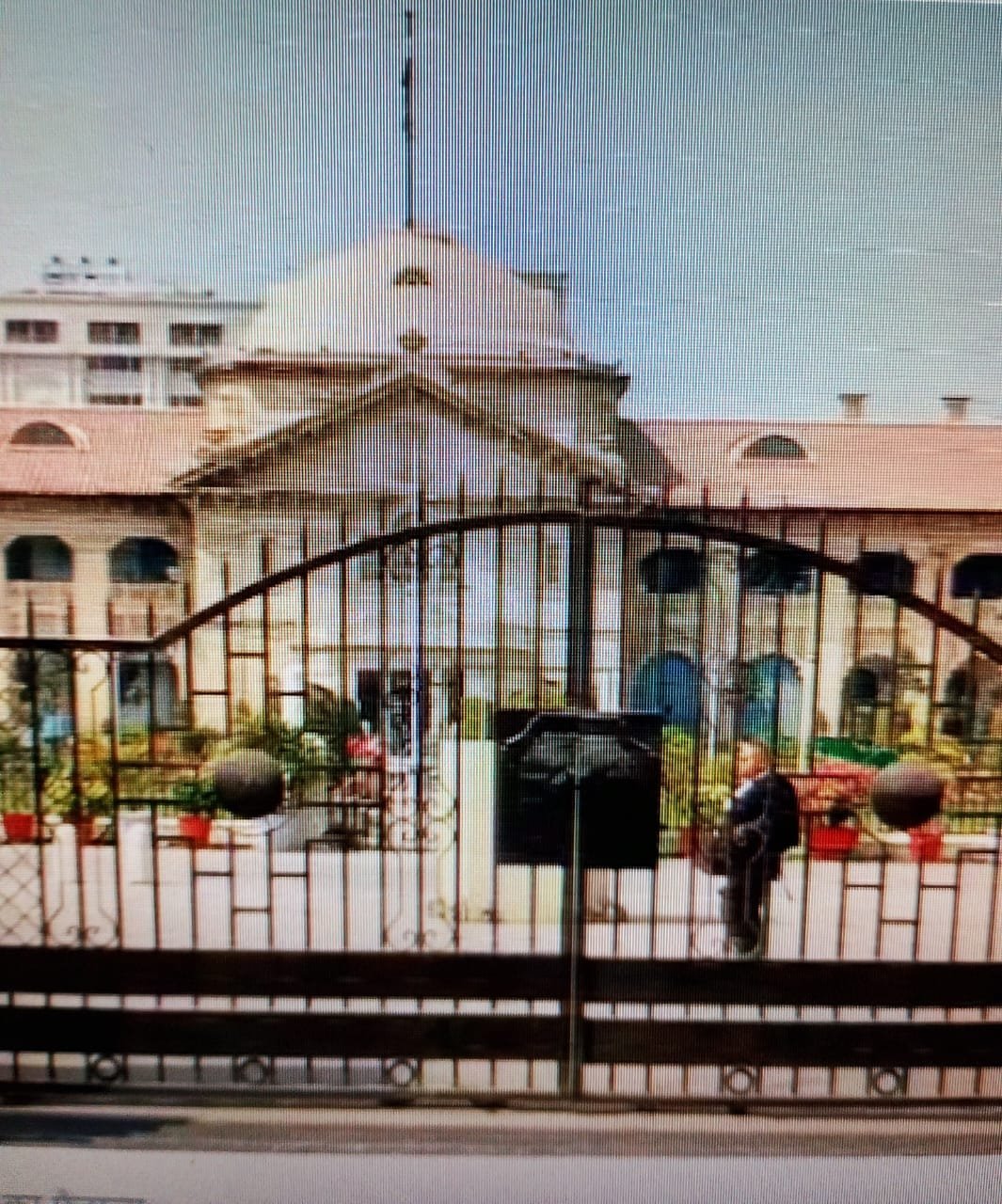
Contents
Lucknow | July 8, 2025
In a major relief to the Yogi Adityanath-led government, the Allahabad High Court’s Lucknow bench has upheld the state’s decision to merge nearly 5,000 government schools with low student enrollment. The court dismissed a petition filed by 51 students from Sitapur district who had challenged the move, calling it a violation of their Right to Education.
The High Court clarified that this is not a case of school closures, but of “pairing” — where smaller schools with fewer than 50 students are being linked to nearby better-equipped institutions to improve quality and access to education.
What the Court Said
- Not mandatory to have a school within 1 km: The bench, headed by Chief Justice Pankaj Bhatia, stated that the Constitution guarantees education under Article 21A but does not specifically mandate that a school must be located within 1 kilometer of every child’s home.
- “Pairing, not shutting down”: The court accepted the government’s argument that the policy is not about closing schools, but about optimizing resources and ensuring that students get access to better infrastructure, teaching, sports, and digital learning tools.
- Wastage of resources: The state also argued that several schools were running with extremely low enrollments and misutilization of resources — including teachers and funds.
Concerns Raised by Petitioners
- Distance and safety: Parents argued that merging schools would force young children to travel longer distances, which could increase dropout rates and pose safety risks.
- No survey or consultation: The petition also questioned why the government proceeded with such a massive change without publishing any survey, public report, or seeking inputs from stakeholders.
What Happens Now
- The High Court has cleared the way for the state to proceed with the pairing process.
- However, the door remains open for further legal action, as some education unions and political groups are reportedly considering taking the matter to the Supreme Court.
Delhi/NCR
Delhi Government Withdraws Fuel Ban on Older Vehicles Following Public Outcry
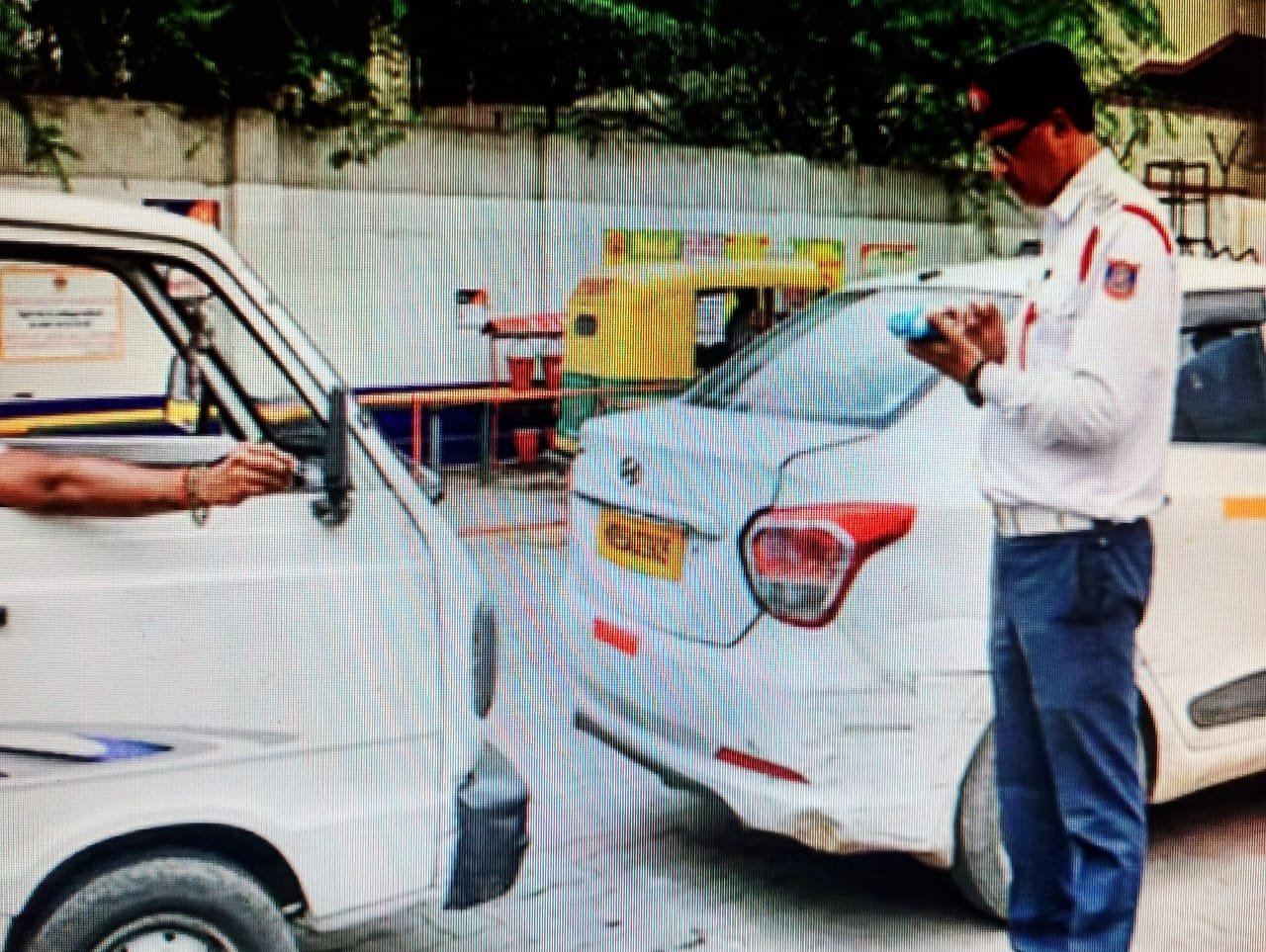
Contents
New Delhi | July 4, 2025:
In a significant policy reversal, the Delhi government has withdrawn its recent directive that barred 10-year-old diesel and 15-year-old petrol vehicles from refuelling at petrol pumps across the capital. The rollback comes merely two days after the rule’s enforcement and follows intense public backlash and widespread confusion.
The order, initially introduced to curb rising pollution levels in the city, had empowered petrol stations with Automatic Number Plate Recognition (ANPR) cameras to detect and deny fuel to vehicles that crossed the age limit. However, within 48 hours of implementation, the policy was suspended by the Environment Department under the leadership of newly-appointed Minister Rekha Gupta.
Key Revisions to the Policy:
- No Refuelling Restrictions: All vehicles, regardless of age, can now refuel at Delhi’s petrol stations.
- Seizure Orders Revoked: Petrol pumps will not seize or refuse service to older vehicles.
- ANPR Cameras to Stay (Temporarily): The cameras installed at fuel stations will continue operating but will not be used for enforcement under the suspended directive.
A senior government official stated,
“The government remains committed to addressing Delhi’s pollution crisis, but any steps taken must be inclusive, realistic, and transparent. The concerns raised by commuters, transport unions, and experts warranted an immediate review of the policy.”
Public Response and Concerns:
The sudden enforcement of the fuel ban had caused considerable inconvenience, particularly for middle- and lower-income groups that rely heavily on older vehicles for livelihood and transportation. Stakeholders criticised the policy for its lack of clarity, abrupt rollout, and the absence of a viable alternative for affected citizens.
Environmental Goals Remain Intact:
While environmental advocates acknowledged the intent behind the measure, many stressed that age-based restrictions are not the most effective solution. Experts are urging the government to focus on:
- Promoting electric mobility
- Expanding and upgrading public transportation
- Implementing stricter emission-based fitness checks for all vehicles
Conclusion:
With the rollback of the July 1 directive, over 4 million vehicle owners in Delhi have gained temporary relief. However, the larger issue of urban pollution remains unresolved. The government has assured that revised, balanced strategies will be introduced soon to combat the capital’s air quality challenges — without disproportionately affecting ordinary citizens.
India
Amarnath Yatra Begins: First Aarti Performed, Devotees Chant ‘Bam Bam Bhole’ as Pilgrim Batches Set Off
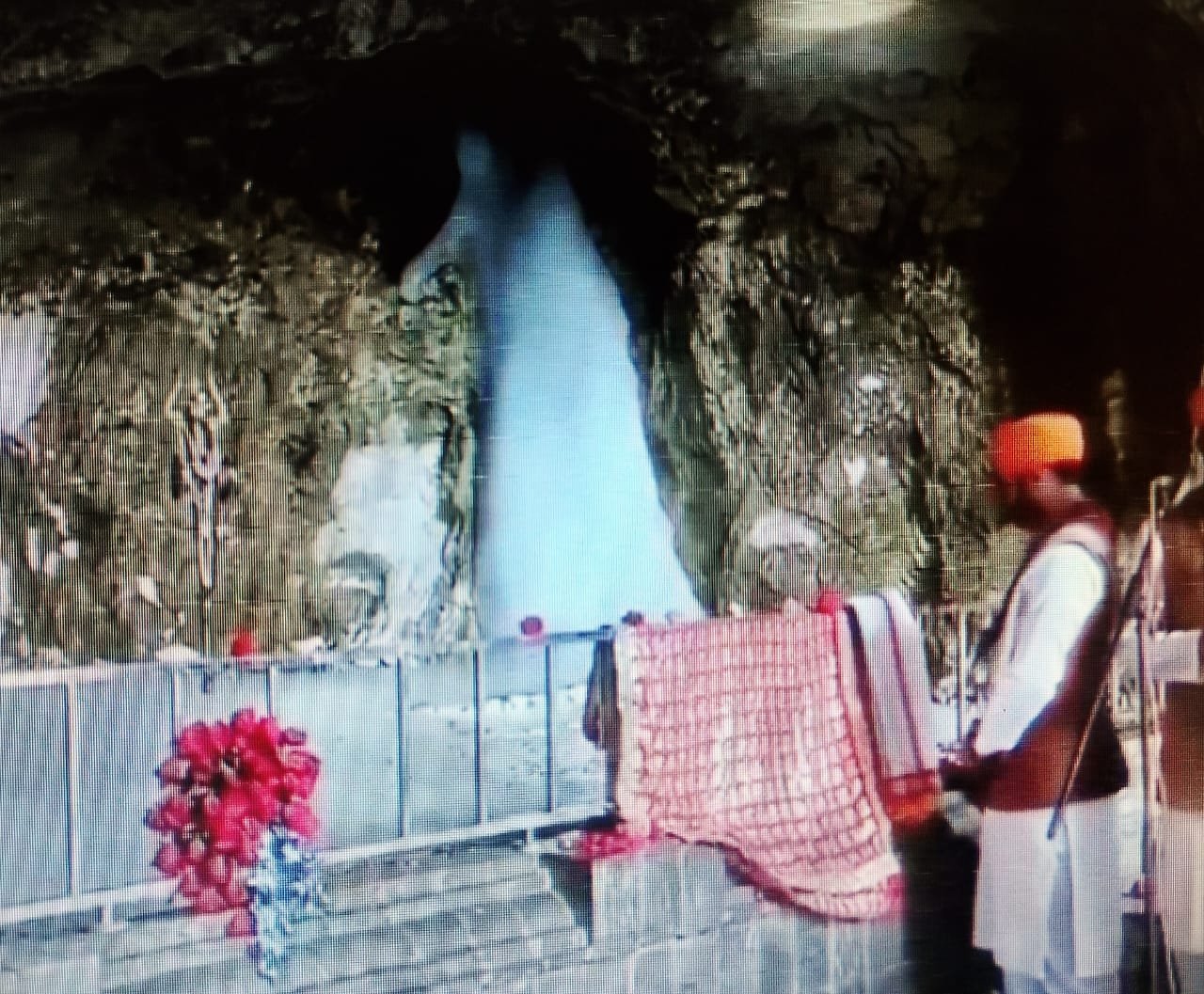
The sacred Amarnath Yatra officially began today. On Thursday morning, the first aarti of Baba Amarnath was performed at the holy cave, marking the spiritual start of the 38-day-long pilgrimage. Simultaneously, the first batches of pilgrims set off from the Baltal and Nunwan (Pahalgam) base camps towards the holy cave, with loud chants of ‘Har Har Mahadev’ and ‘Bam Bam Bhole’ echoing through the valleys.
A day earlier, on Wednesday, the first convoy of 5,892 pilgrims was flagged off by Lieutenant Governor Manoj Sinha from the Bhagwati Nagar base camp in Jammu. The pilgrims reached Kashmir by afternoon, where they were greeted with warmth and enthusiasm by both local residents and the administration.
This year, the yatra will take place along both the Pahalgam and Baltal routes, concluding on Raksha Bandhan (August 19). Last year, the yatra lasted 52 days and saw over 5 lakh devotees visiting the sacred shrine.
So far, more than 3.5 lakh pilgrims have already registered for this year’s yatra. To accommodate spontaneous registrations, special counters have been set up in Jammu at Saraswati Dham, Vaishnavi Dham, Panchayat Bhawan, and Mahajan Sabha. These centers are facilitating around 2,000 registrations per day.
Pahalgam Route: Gentle Ascent, Rich in Natural Beauty
The Pahalgam route is longer but relatively easier. It takes around three days to reach the cave, making it ideal for those looking for a steady, manageable climb without steep inclines.
- Starting Point: Pahalgam Base Camp
- First Halt: Chandanwari – Located 16 km from the base camp, this is where the trekking officially begins.
- Next Leg: A 3-km uphill trek brings pilgrims to Pissu Top, a known rest point.
- Day 1 Ends at: Sheshnag – A 9-km stretch from Pissu Top leads to this breathtaking glacial lake area where yatris stay overnight.
- Day 2 Journey: A challenging but rewarding 14-km trek to Panchtarni.
- Final Stretch: From Panchtarni, the holy Amarnath Cave is just 6 km away.
This route is preferred by elderly devotees and families because of its relatively gentle inclines and picturesque terrain.
Baltal Route: Fast But Physically Demanding
The Baltal route is perfect for those short on time but high on stamina. This trail takes you to the cave and back within a day, but it’s not for the faint-hearted.
- Distance: 14 km one way
- The climb is steep and continuous, with narrow paths and sharp turns, posing challenges especially for senior citizens or those with health issues.
- The terrain is rugged and rocky, requiring careful navigation.
While the Baltal route saves time, the physical strain is much greater, and pilgrims are advised to be in excellent health if choosing this option.
Travel Smart: Safety and Health Precautions for Pilgrims
The Amarnath Yatra is a high-altitude trek that demands both spiritual strength and physical preparedness. To ensure a smooth journey, the Shrine Board and medical authorities advise the following:
Essential Documents:
- Medical Fitness Certificate
- 4 Passport-size Photographs
- Aadhar Card
- RFID Yatra Permit
- Completed Travel Application Form
Prepare Your Body:
- Walk 4 to 5 km daily for at least a month before the yatra
- Practice yoga and breathing exercises like Pranayama to build lung capacity
Must-Carry Items:
- Woollen clothing and thermals
- Raincoat or poncho
- Trekking stick
- Water bottle
- Backpack with essential medicines and first-aid kit

A Journey of Faith, Not Just a Trek
Whether you choose the longer scenic route or the short yet intense trail, the Amarnath Yatra is more than just a physical challenge—it’s an emotional and spiritual passage. With proper planning and awareness, every pilgrim can experience the divine energy of the sacred cave and return blessed.
“I’m truly happy. The arrangements here are excellent,” says Manisha Ramola, a devotee on her way to the Amarnath cave. “No one is being allowed to proceed without proper documents and valid ID. And that’s important — it’s for our safety.”
She added, “We are not here for sightseeing in Kashmir. Our only purpose is the Amarnath Yatra, and our complete focus is on this sacred journey. I pray for my country — may everyone stay healthy and happy.”
Himachal Pradesh
“Rain, Rocks, and Ruin: Himachal’s Seraj Fights Back from Cloudburst Tragedy”
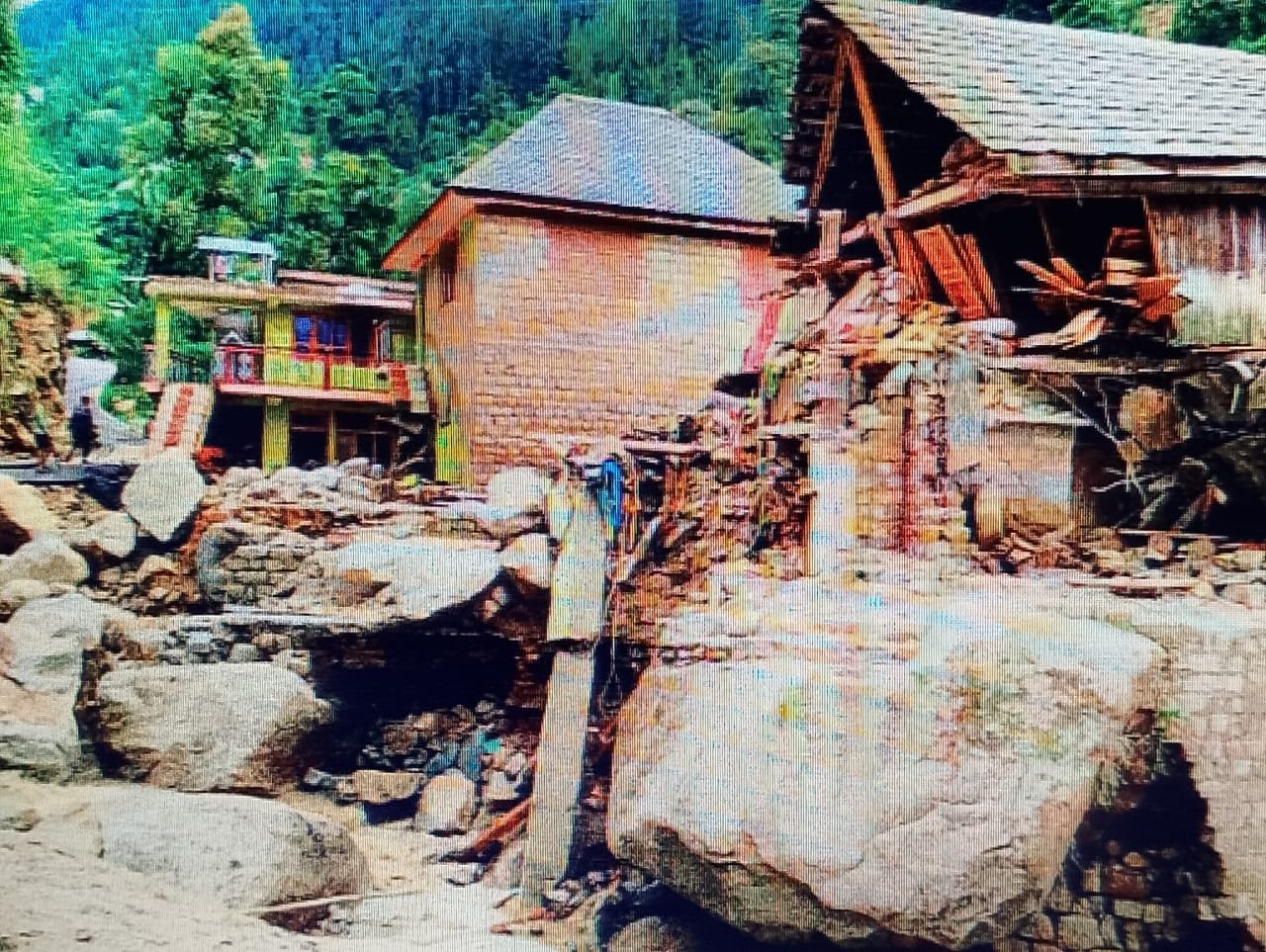
Contents
“In Himachal’s Seraj Assembly constituency, the natural disaster that struck Thunag and surrounding areas has turned into one of the most devastating tragedies in recent memory.”
Devastation Unleashed: Nature’s Fury Wreaks Havoc in Himachal’s Seraj Valley
In one of the worst natural disasters to hit Himachal Pradesh in recent memory, the Seraj Assembly constituency of Mandi district—particularly Thunag and its surrounding areas—has witnessed unprecedented destruction. Relentless rainfall, cloudbursts, and landslides have left the region in utter chaos.
Thunag market has been reduced to rubble, with nearly 150 houses and shops completely flattened. Nearby Jarol market has also been wiped out, while Janjehli has been devastated by flash floods, altering the landscape beyond recognition.
The entire Seraj Valley stands cut off from the outside world. Roads have vanished, bridges have collapsed, and all means of communication are down. The catastrophe has dealt a crippling blow to the region’s infrastructure.
Power lines are down and drinking water schemes have failed, plunging locals into a severe crisis of food, water, and basic necessities. As of now, thousands remain stranded without access to relief.
This is not just a disaster—it is a humanitarian emergency. Immediate attention, relief operations, and long-term rehabilitation efforts are the need of the hour.
Let me know if you’d like this adapted into a press release, government appeal, or on-ground report format.
Forced Under the Open Sky: Communication Blackout Hampers Relief in Himachal’s Disaster Zone
In the wake of the devastating natural disaster in Himachal Pradesh’s Seraj region, thousands are now forced to live under the open sky, with no roof over their heads. The absence of mobile networks has further crippled communication, making it extremely difficult to gather information or coordinate rescue and relief operations.
Critical infrastructure like hospitals, schools, and government buildings has also been badly damaged, and restoration may take a long time.
Amid this crisis, teams from the local administration, police, SDRF, and villagers have joined hands for rescue and relief work. In a show of sheer dedication, disaster management teams trekked 16 kilometers on foot from Bagsyad to reach Thunag, initiating urgent rescue efforts.
Local villagers have displayed remarkable courage and unity, speeding up the relief efforts with their on-ground support.
Residents and local authorities have made a fervent appeal to the government for immediate aerial surveys and the deployment of NDRF and Army personnel to accelerate aid. With communication lines down, people are turning to social media, sharing heartbreaking visuals of the devastation and pleading for urgent help.
Food Crisis Deepens: 38 Panchayats in Himachal’s Seraj Cut Off, Thousands Struggle for Survival
Four days after the devastating cloudburst and heavy rainfall that struck Seraj region on the night of June 30–July 1, the situation remains grim. Over 80,000 people are now facing an acute food shortage, with entire villages cut off from essential supplies due to blocked and damaged roads.
Worst-hit are the 38 panchayats in Thunag sub-division, including Thunag, Pakhrar, Jarol, Pandavshila, and Chhiyuni, where people are reportedly going hungry. Relief efforts have been severely hampered as access routes have been destroyed. Even an attempt by Chief Minister Sukhvinder Singh Sukhu to deliver ration kits on Wednesday to Rangaloo and Janjehli failed — damaged roads made it impossible for his team to even reach the helipads.
Social media is flooded with harrowing visuals of the devastation. Viral photos and videos hint at a cloudburst in Pakhrar, which triggered large-scale destruction. In other parts of Seraj, continuous rainfall has caused landslides and flash floods, wiping out roads, bridges, and infrastructure.
The crisis doesn’t stop at food — a severe drinking water shortage is also gripping the region. The Chhadi Khad–Shetadhar water supply scheme, which catered to 25 panchayats, has collapsed. With natural springs damaged, villagers have no option but to collect rainwater for their daily needs.
With every passing hour, the situation is worsening. As connectivity remains broken and essential services are down, locals are left to fend for themselves, relying on community efforts and prayers for help to reach them soon.
Dozens of Towers Down, Communication Paralyzed
Relief operations have come to a standstill as communication networks remain down. Mobile connectivity has not yet been restored, with dozens of telecom towers out of service. Attempts to extend the signal range from the Kandha tower have failed. Control rooms in Thunag and Janjehli are inactive due to the communication blackout.
Power supply has been cut off for the past four days, as the Gohar-Thunag 33kV transmission line lies damaged. Around 10% of the Chail-Janjehli road has been completely washed away, while routes like Lambathach-Kalhani-Pandoh and Lambathach-Chiuni-Shetadhar have been destroyed. Rural link roads have practically vanished.
A clear lack of coordination in disaster management is visible. Locals are searching for missing loved ones in ravines and streams. Education and healthcare services are crippled—dozens of schools are filled with debris. People are living in a state of uncertainty and crisis, and the sluggish pace of relief efforts is only adding to their suffering.
Only Patwari Reached the Spot, No Senior Official Present
Devendra Rana alias Pammi, the deputy head (up-pradhan) of Saroa Panchayat, shared the grim situation. He said that during the heavy rainfall, a small stream suddenly turned into a raging river, sweeping away everything in its path. The temple guest house, homes of nine families, the Vakhli and Kuklah bridges, village roads, bikes, scooters, cars, and even household items were all washed away. Some vehicles are still stuck in thick silt. Signs of destruction are scattered across every corner of the stream.
So far, only the local Patwari has visited the site — not a single senior administrative officer has shown up. No relief material, tents, or emergency aid have reached the affected families.
He demanded that immediate arrangements be made to shift the displaced families to a safe and secure location.
Meanwhile, five relief camps have been set up in different parts of the district, sheltering 357 people. These include two camps in Mandi, two in Thunag, and one in Dharampur.
“Biggest Tragedy Ever Witnessed in Seraj: Jairam”
Former Chief Minister and Leader of Opposition, Jai Ram Thakur, has described the recent disaster in Himachal Pradesh’s Seraj region as the worst tragedy the area has ever faced. He has urged the state government to accelerate relief operations and ensure a serious and focused search for the more than two dozen missing persons.
Speaking after visiting the flood-affected areas of Kuklah and Bagsyad—his home constituency—on Wednesday, Thakur said,
“The extent of devastation caused by this calamity is unprecedented. Seraj has never seen such widespread destruction before.”
He expressed concern that for the past three days, the region has been completely cut off—with no electricity and no communication services functioning. This breakdown in basic infrastructure has severely hampered rescue and relief efforts, making it even more difficult for the authorities to reach those in need.
Thakur’s visit aimed not just to survey the damage, but also to highlight the urgency of action. He stressed that the government must prioritize restoring essential services, and that time is of the essence when lives are at stake.
Events
Where Ghazals Meet the Heartbeat of Romance — Experience ‘Teri Deed Ho Gayi Yara’

Teri Deed Ho Gayi Yara is the focus of all attention as Jaipur welcomed this enchanting collection of ghazals on June 30, 2025. Crafted recently by lyricist Rajendra Kumar Jain “Raja”, the album celebrates seven enchanting compositions that beautifully express everyday emotions and timeless love.
About the Album: 7 Soulful Ghazals

Teri Deed Ho Gayi Yara presents seven original ghazals penned by Rajendra Kumar Jain “Raja”. These songs were composed to capture the nuances of longing, devotion, and shared memories.
Short, crisp lyrics woven with evocative imagery form the emotional core of each track, promising an intimate musical journey for listeners who cherish meaningful poetry set to melody.
The Grand Launch Event
The album Teri Deed Ho Gayi Yara was officially launched on June 30, 2025, at the Mahavir Bhavan on Kiran Path, Mansarovar, Jaipur. Credent TV’s Chief Editor Sunil Narnaulia and renowned singer-choreographer Veena Modani graced the occasion by unveiling the album cover and pressing “play” in front of an eager crowd.
Key Guests & Performers
Present at the launch:
Dr. Kanta Dhawan – Singer & Music Director
Pandit Ravi Shankar Bhatt – Singer & Music Director
Singers who lent their voices to the ghazals:
Rajendra Jadeja
Punit Agarwal
Vishal Kansotia
Samta Jain
Veenu Mittal
Each artist performed their respective ghazals, filling the hall with rich vocals and heartfelt expressions.
Heartfelt Remarks
Sunil Narnaulia reflected on the fast‑paced world we live in:
“In today’s hectic life, the songs penned by Rajendra ‘Raja’ bring real solace. These lyrics truly speak the language of the common man’s heart.”
Veena Modani described the songs as deeply emotional, highlighting how each piece resonates with listeners, drawing them into the lyrical universe of Teri Deed Ho Gayi Yara.
Artist Profiles
Rajendra Kumar Jain “Raja”
A versatile poet and host, Rajendra Kumar Jain “Raja” gained popularity for his earlier album Meri Tahreer, which was widely appreciated upon its release. With Teri Deed Ho Gayi Yara, he reaffirms his talent as a lyricist of emotional depth.
Vocalists & Composers
Dr. Kanta Dhawan and Pandit Ravi Shankar Bhatt not only performed but also composed music for the album.
The singing ensemble—Jadeja, Agarwal, Kansotia, Jain, Mittal—brought varied tones, styles, and emotional colours, giving each ghazal its unique identity.
Musical Highlights & Emotional Themes

Each ghazal in Teri Deed Ho Gayi Yara touches upon themes of love’s longing, the beauty of memory, inner peace, and romantic yearning. The album blends classical music structures with contemporary presentation—ensuring both purists and newer audiences find resonance.
The compositions are rich in evocative metaphors, offering a listening experience that is both introspective and uplifting.
Public & Critical Response
Although released just days ago, Teri Deed Ho Gayi Yara is already generating buzz. Critics have applauded the emotional strength of the lyrics and the refreshing musical styles. Platforms like Credent TV are showcasing featurettes that highlight the creative process behind each ghazal.
Listeners are praising the album across social media and streaming platforms—even parallels are being drawn to classics like Meri Tahreer.
Why Teri Deed Ho Gayi Yara Matters
Cultural importance: Revives the beloved form of ghazal in modern contexts.
Community connection: Lyrics by Jin resonate with everyday experiences, bridging art and heart.
Artistic synergy: The collaboration of multiple singers and directors fosters a rich tapestry of styles and interpretations.
Message of calm: Especially relevant in fast-paced lifestyles, this album is a soothing balm for the soul.
Teri Deed Ho Gayi Yara marks a remarkable milestone for Rajendra Kumar Jain“Raja” and his musical collaborators. With heartfelt lyrics, soulful voices, and rich melodies, this album speaks directly to the heart.
Experience the emotional resonance of these 7 ghazals—each one a delicate story of love, longing, and soulful reflection.
Credent TV
VIBGYOR Summer Camp Ends on a High at DAV Centenary Public School, Jaipur
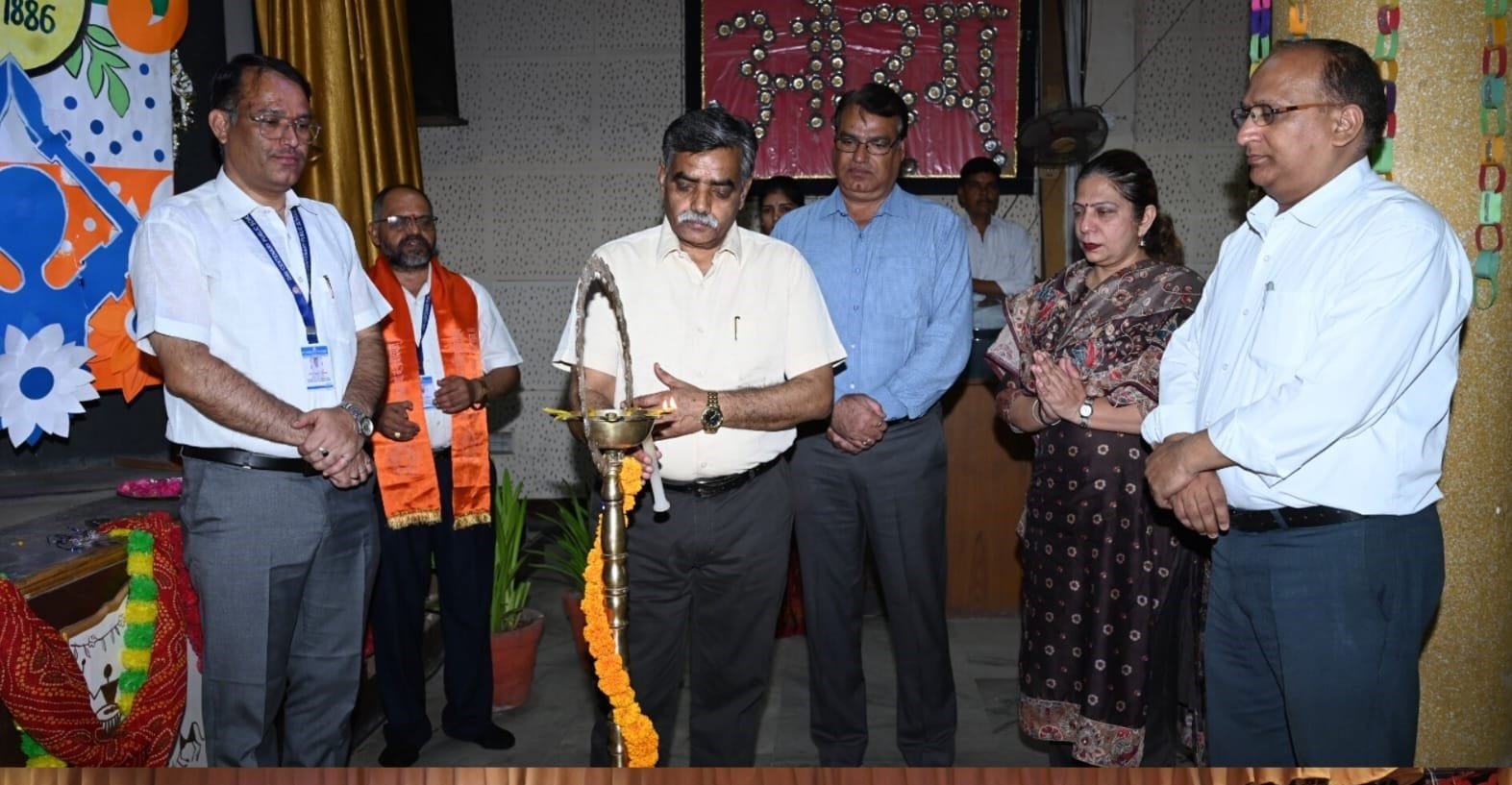
Contents
Colours of Joy, Confidence, and Creativity: VIBGYOR Summer Camp Ends on a High at DAV Centenary Public School, Jaipur
DAV Centenary Public School, Vaishali Nagar, Jaipur concluded its much-awaited 10-day summer camp ‘VIBGYOR’ with a grand Closing Ceremony on 31 May 2025. Running from 20 May to 31 May, the camp became a dynamic platform for students from DAV and nearby schools to dive into creativity, learn new skills, and experience fun-filled, meaningful activities in a safe and cheerful environment. The core motto “Learn and Share” guided each day’s schedule, promoting not just learning but also collaboration, self-expression, and overall development.
Students Shine in Cultural Show with Art, Music, Dance and Taekwondo
The Closing Ceremony began on a spiritual note with the traditional lighting of the lamp, marking the celebration of knowledge and positivity. A high-energy cultural programme followed, where students showcased their talents through colourful dance performances, melodious songs, and a well-coordinated taekwondo demonstration that reflected both discipline and confidence. Parents watched with pride as their children took centre stage, making it a memorable and emotional experience for many.
Special Guest Applauds School’s Efforts in Value-Based Learning
The school had the honour of welcoming Ms. Amardeep Chopra, Vice-Principal of Tilak Public School, Jaipur, as the Chief Guest. A passionate educator and active contributor to social causes through NGOs like Sparsh and Helpage India, Ms. Chopra commended DAV’s efforts in blending modern education with cultural and spiritual values. Her presence inspired students and staff alike, underlining the importance of social responsibility in education.
Principal Emphasises Positive Parenting and Holistic Growth
In his heartfelt address, Principal Mr. A.K. Sharma extended gratitude to the staff, students, and parents, appreciating their collective efforts that made the camp a success. He spoke about DAV’s unique identity—where tradition meets modernity, and where education is rooted in the values of Arya Samaj and spiritual practices like Havan. Addressing parents, he emphasized the importance of “connecting before correcting,” and encouraged them to reinforce good behaviour by recognizing and appreciating children’s positive actions. All participating students received certificates to acknowledge their enthusiasm and dedication. The ceremony ended on a high note, with parents applauding the school’s commitment to nurturing well-rounded individuals.
Education
7 Inspiring Highlights of DAV Foundation Day Jaipur Celebration – Amazing Vedic Legacy Revealed!
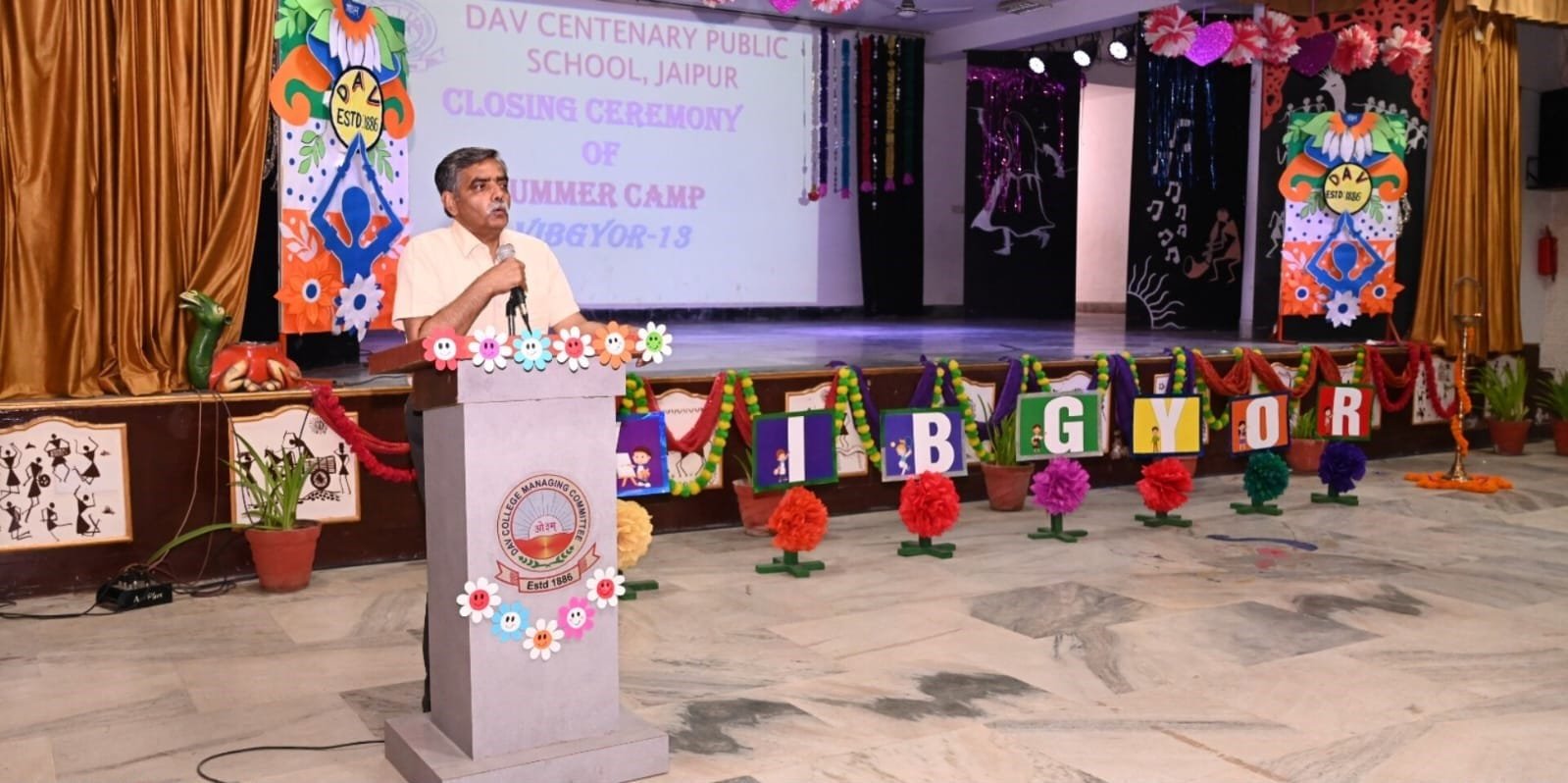
Contents
1. What is DAV Foundation Day?
DAV Foundation Day Jaipur marks the birth of the Dayanand Anglo-Vedic movement, initiated on June 1, 1886 in Lahore. It honors Swami Dayanand Saraswati’s vision of blending Vedic wisdom with modern scholarship and commemorates Mahatma Hansraj’s dedication as the first headmaster
2. DAV Foundation Day Jaipur – Opening Moments
DAV Foundation Day Jaipur began with reverence at DAV Centenary Public School, Vaishali Nagar, Jaipur. A soulful invocation reminded attendees of the school’s inception and aspirations. The reflection reaffirmed pride in the DAV mission of merging Vedic values with rigorous academics.
3. Tribute to Visionaries
A heartfelt tribute acknowledged Mahatma Hansraj’s selfless leadership and Swami Dayanand’s enduring impact. Their ideals continue guiding educators and students across India
4. Cultural Extravaganza: Music & Dance
The programme featured:
- A soul-stirring song symbolizing dedication,
- An energetic dance sequence embodying cultural pride.

Through artistic expression, students captured the spirit of DAV Foundation Day Jaipur, blending tradition with modern vibrancy.
5. Green Action: Tree Plantation Drive
In alignment with DAV’s value of environmental stewardship, students and staff led a tree plantation initiative. This initiative not only beautified the campus but fostered ecological awareness among young learners.
6. Leadership Speeches & Educational Vision
Principal Mr A. K. Sharma delivered a powerful address, praising the staff’s commitment and urging them to uphold Swami Dayanand Saraswati and Mahatma Hansraj’s values through dedicated teaching. His words illuminated the role of educators in perpetuating the DAV Foundation Day Jaipur legacy.
7. The Legacy of DAV in Jaipur & Beyond
Founded by Mahatma Hansraj in 1886, the DAV movement now spans over 900 schools and institutes across nations
Locally, DAV Centenary Public School in Vaishali Nagar upholds this heritage through disciplined academics, cultural integration, and initiatives like this year’s celebration.
The school’s reputation as one of the top educational institutions in the affluent Vaishali Nagar area reflects its excellence
DAV Foundation Day Jaipur shone with cultural celebration, green initiatives, and heartfelt tributes, reflecting a legacy of combining Vedic philosophy with modern education. As educators and students unite each year, they renew their commitment to nurturing well-rounded citizens equipped with values, environmental awareness, and cultural identity.
Art
Vedanta PG Womens College Ringus : A Celebration of Dreams, Dedication & Daughters
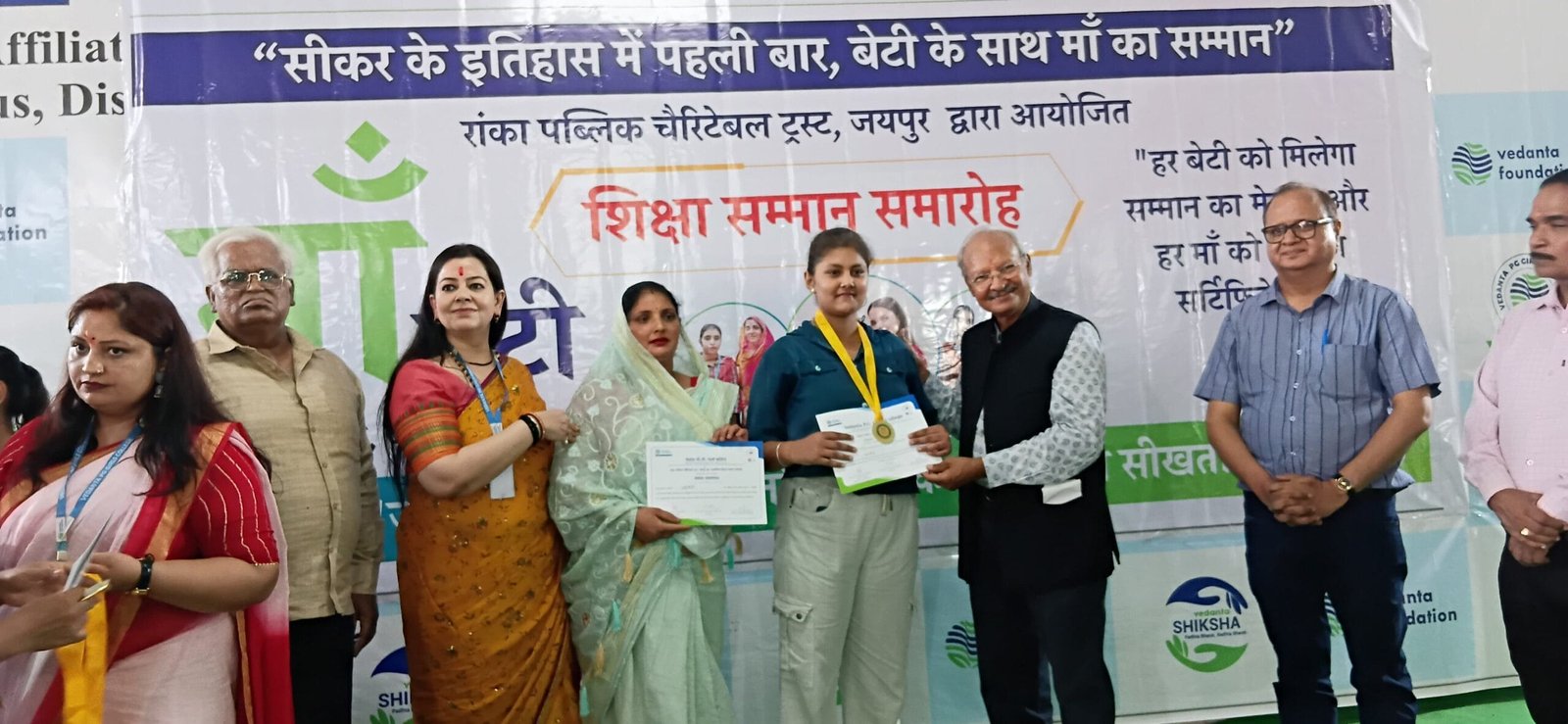
Contents
“Mother-Daughter Education Honour Ceremony” Lights Up Vedanta PG Women’s College, Ringas
Vedanta PG Women’s College, Ringas
Chief Guest: Hon’ble J.K. Ranka, Former Judge, Rajasthan High Court
Organised with Support from: Ranka Public Charitable Trust, Jaipur
A Moment to Remember
In a heartfelt and inspiring initiative, Vedanta PG Women’s College, Ringas hosted a unique event that celebrated not only the achievements of young women but also honoured the mothers who stood by them. The “Mother-Daughter Education Honour Ceremony” brought together families, educators, and community leaders to recognise the power of education and the deep bond between mothers and daughters.
A Warm Welcome by the Principal
Principal Prof. Dr. Shubha Sharma welcomed all guests, students, and their proud mothers with warmth and gratitude. She shared her vision for the college as a place where girls are empowered not only through education but through values and strength that come from their families.
“Educating girls is not just a goal for us—it is our identity. Behind every strong daughter is a mother who believed, who supported, who never gave up.”

Words of Encouragement from the Chief Guest
Chief Guest Hon’ble J.K. Ranka appreciated the initiative and praised the institution for recognising the contribution of mothers alongside their daughters’ achievements.
“Honouring daughters for their achievements, along with the mothers who shaped their journeys, is both noble and necessary. Girls’ education is vital, and this initiative by Vedanta College reflects true progress.”
He also emphasized that Ranka Public Charitable Trust is fully committed to advancing girls’ education and social empowerment.
A Celebration of Bonds Beyond Words
The most touching moment of the event was when mothers walked the stage beside their daughters to receive honours together. It wasn’t just recognition—it was emotion, memory, and pride shared on one platform.
Dr. Sharma added,
“A mother is the melody of her daughter’s breath. This relationship builds not just individuals, but families, communities, and nations.”
Recognising Achievers in Every Field
The ceremony celebrated young women who completed their schooling, teacher training, and those who excelled in academics, culture, and sports. What made the event truly special was that these recognitions were shared with the women who made those journeys possible—their mothers.
Gratitude to the Foundation’s Leadership
Dr. Sharma thanked the guiding forces behind Vedanta Foundation:
- Mrs. Suman Didwania, Trustee
- Mr. T. Ravikrishnan, CEO
Their ongoing support and vision helped transform this event into a symbol of community spirit and empowerment.


A Well-Orchestrated Celebration
The event was smoothly conducted by Dr. Sushila Garhwal, Dr. Jyoti Rajawat, and Ms. Shilpi Mamodiya. Their confident and graceful anchoring ensured the flow of the event remained inspiring and connected with every guest in the hall.
More Than Just a Ceremony
This celebration went beyond felicitation. It sent out a larger message to society—that when we support and uplift girls and acknowledge the sacrifices of mothers, we lay the foundation for a better, more inclusive future. It reinforced the idea that education, when coupled with emotional strength and family values, becomes a tool of real transformation.
Education
Kota ICICI Bank Staffer Swindles ₹4.5 Crore, Gambles It All on Stock Market

Contents

Sakshi Gupta, a relationship manager at ICICI Bank’s Kota branch from 2020 to 2023, was arrested for cheating customers of ₹4.5 crore. She changed their contact details to stop alerts and transferred money to a pool account, which she used for stock market trading. The fraud came to light after the branch manager filed a complaint.
In a shocking case of financial fraud, Sakshi Gupta, a relationship manager at ICICI Bank’s Kota branch, has been accused of embezzling ₹4.5 crore from customer accounts. Gupta allegedly manipulated customer contact details to prevent them from receiving transaction alerts, allowing her to siphon off funds undetected. The stolen money was reportedly funneled into a pool account and subsequently used for high-risk stock market trading. The fraudulent activity went unnoticed for months, raising serious concerns about internal security and oversight mechanisms within the bank.
The accused named Sakshi Gupta was posted as a relationship manager at ICICI Banks’s DCM branch, according to a PTI news agency.
Sakshi Gupta, a relationship manager at ICICI Bank’s Kota branch from 2020 to 2023, was arrested for a massive fraud involving ₹4.58 crore. According to police, she stole money from over 110 accounts belonging to 41 customers over a span of two years. Gupta allegedly changed customer contact details to block transaction alerts and transferred the funds into a pool account. She then invested the stolen amount in the stock market, where she lost most of it. The fraud came to light after branch manager Tarun Dadich filed a complaint at Udhyog Nagar Police Station on February 18.
Sakshi Gupta, a relationship manager at ICICI Bank’s Kota branch from 2020 to 2023, was arrested for cheating customers out of ₹4.58 crore. Police said she stole money from over 110 accounts belonging to 41 customers over two years. To avoid detection, she changed the registered mobile numbers of account holders to numbers belonging to her relatives. This prevented customers from getting transaction alerts or OTPs.
Gupta then quietly transferred funds to multiple accounts. In one case, she used the account of an elderly woman—who was completely unaware—as a “pool account” to collect money. By February 15, 2023, she had moved over ₹3 crore into this single account. Most of the stolen money was then invested in the stock market, where she lost a large part of it. The fraud was exposed when branch manager Tarun Dadich filed a complaint at Udhyog Nagar Police Station on February 18.
Sub-Inspector Ibrahim confirmed the details of the case.
Sakshi Gupta, a relationship manager at ICICI Bank’s Kota branch from 2020 to 2023, has been arrested for embezzling ₹4.58 crore from customers’ accounts. According to police, she stole money from over 110 accounts of 41 customers over two years. To avoid detection, she changed the mobile numbers linked to the accounts with those of her relatives, stopping transaction alerts and OTPs from reaching the actual account holders.
Sub-Inspector Ibrahim revealed that Gupta misused debit cards, PINs, and OTPs, and even activated overdraft facilities on 40 accounts without the customers’ knowledge. She also closed 31 customers’ fixed deposits, illegally transferring over ₹1.34 crore, and took a personal loan of ₹3.40 lakh using fraudulent means.
Many of these transactions were carried out using Insta Kiosks, ATMs, and digital banking platforms. She used debit cards from at least 4 customers and routed money into demat accounts to hide her activities. One elderly woman’s account, unknown to her, was used as a pool account to collect over ₹3 crore.
The fraud came to light after branch manager Tarun Dadich filed a complaint at Udhyog Nagar Police Station on February 18, 2023.
Meanwhile, ICICI Bank released a statement saying, “The interest of our customers is most important. We filed an FIR immediately after discovering the issue and have a zero-tolerance policy for any fraudulent activity.” The bank added that Gupta has been suspended and genuine customer claims have already been settled.
Sakshi Gupta, an ICICI Bank relationship manager in Kota, has been arrested for allegedly siphoning off Rs 4.58 crore from customer accounts between 2020 and 2023. She fraudulently withdrew funds from over 100 accounts, investing in the stock market and suffering losses. The bank has filed an FIR, suspended the employee, and settled genuine claims from impacted customers.
KOTA: In a major bank fraud case, Sakshi Gupta, a relationship manager at ICICI Bank’s Shriram Nagar branch in Kota, has been accused of siphoning off ₹4.58 crore from customer accounts between 2020 and 2023. She was arrested by Udhyog Nagar police on May 31 after an investigation into the fraud, which first came to light on February 18 when branch manager Tarun Dadhich filed a complaint.
According to the police, Sakshi fraudulently withdrew money from over 100 accounts belonging to 41 customers over two and a half years. To hide her activities, she changed the mobile numbers linked to many accounts to those of her relatives, preventing customers from receiving transaction alerts and OTPs.
Sub-Inspector Ibrahim stated that Sakshi systematically transferred large sums into various accounts, including over ₹3 crore into an elderly woman’s account that she used as a “pool account” without the woman’s knowledge. She also misused debit cards, PINs, and OTPs, and even activated overdraft facilities on 40 customer accounts without consent. Additionally, she closed fixed deposits and took a personal loan using fraudulent methods.
Most of the siphoned money was invested in the stock market, where she incurred heavy losses. The fraud was carried out using digital banking platforms, ATMs, Insta Kiosks, and demat accounts.
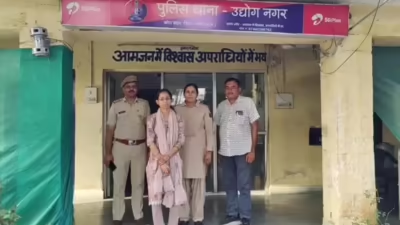

 Education1 month ago
Education1 month agoKota ICICI Bank Staffer Swindles ₹4.5 Crore, Gambles It All on Stock Market

 Bollywood1 month ago
Bollywood1 month agoHousefull 5 Movie Review: Akshay Kumar, Riteish Deshmukh Bring Laughter and Twists in Bollywood’s Biggest Comedy Franchise

 Education2 weeks ago
Education2 weeks ago11 Powerful Reasons Why DAV International Yoga Day Jaipur Uplifted Spirits!

 Cricket1 month ago
Cricket1 month agoBengaluru Chinnaswamy Stadium Stampede: 11 Dead, 33 Injured in RCB Victory Parade Chaos

 Education2 weeks ago
Education2 weeks ago7 Inspiring Highlights of DAV Foundation Day Jaipur Celebration – Amazing Vedic Legacy Revealed!

 Credent TV2 weeks ago
Credent TV2 weeks agoVIBGYOR Summer Camp Ends on a High at DAV Centenary Public School, Jaipur

 Education1 week ago
Education1 week agoEmpowering Educators: A Three-Day Learning Journey at DAV Centenary Public School, Jaipur

 Art2 weeks ago
Art2 weeks agoVedanta PG Womens College Ringus : A Celebration of Dreams, Dedication & Daughters
































